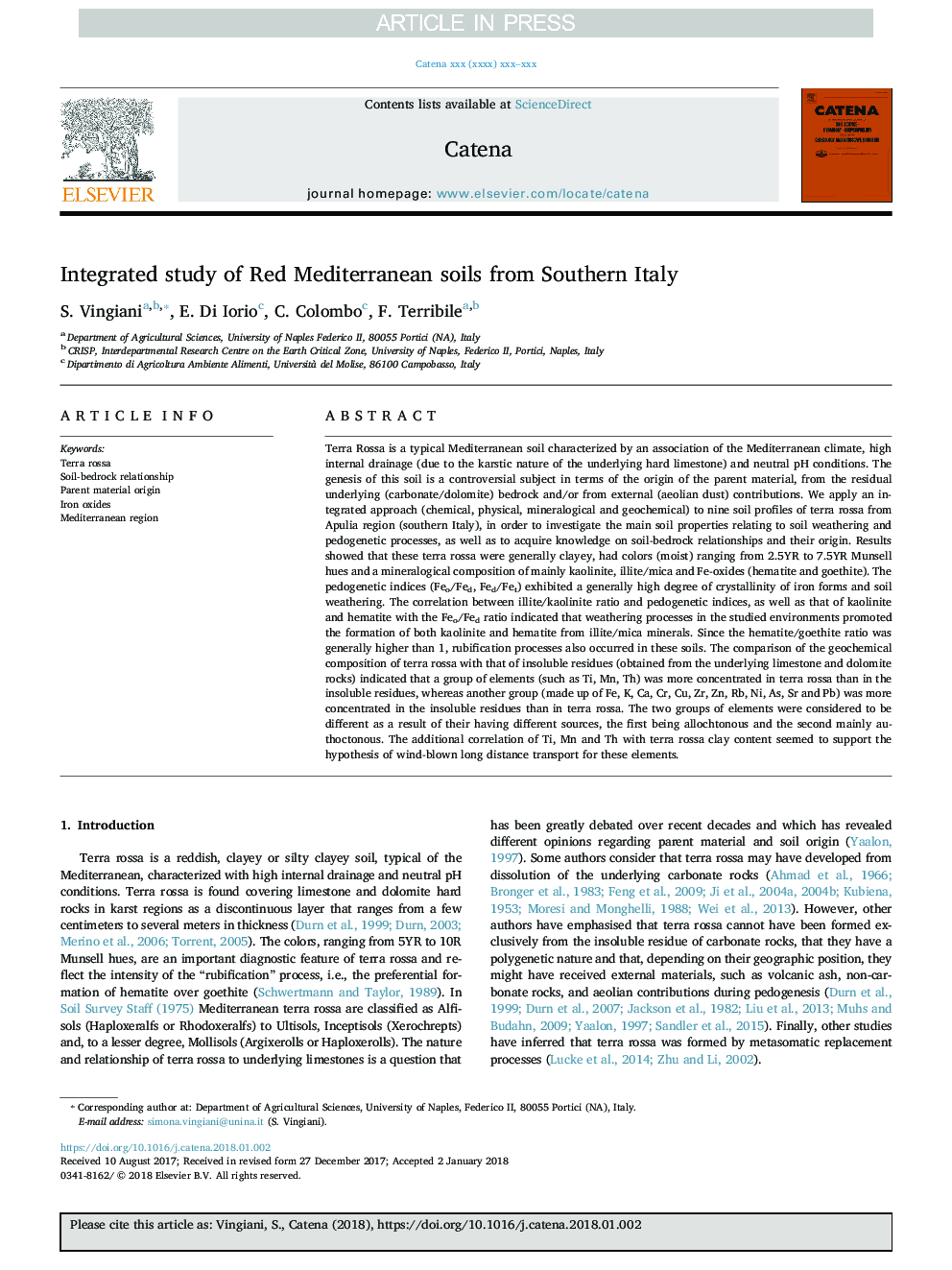| کد مقاله | کد نشریه | سال انتشار | مقاله انگلیسی | نسخه تمام متن |
|---|---|---|---|---|
| 8893455 | 1629186 | 2018 | 12 صفحه PDF | دانلود رایگان |
عنوان انگلیسی مقاله ISI
Integrated study of Red Mediterranean soils from Southern Italy
ترجمه فارسی عنوان
مطالعه یکپارچه خاک های سرخ مدیترانه ای از جنوب
دانلود مقاله + سفارش ترجمه
دانلود مقاله ISI انگلیسی
رایگان برای ایرانیان
موضوعات مرتبط
مهندسی و علوم پایه
علوم زمین و سیارات
فرآیندهای سطح زمین
چکیده انگلیسی
Terra Rossa is a typical Mediterranean soil characterized by an association of the Mediterranean climate, high internal drainage (due to the karstic nature of the underlying hard limestone) and neutral pH conditions. The genesis of this soil is a controversial subject in terms of the origin of the parent material, from the residual underlying (carbonate/dolomite) bedrock and/or from external (aeolian dust) contributions. We apply an integrated approach (chemical, physical, mineralogical and geochemical) to nine soil profiles of terra rossa from Apulia region (southern Italy), in order to investigate the main soil properties relating to soil weathering and pedogenetic processes, as well as to acquire knowledge on soil-bedrock relationships and their origin. Results showed that these terra rossa were generally clayey, had colors (moist) ranging from 2.5YR to 7.5YR Munsell hues and a mineralogical composition of mainly kaolinite, illite/mica and Fe-oxides (hematite and goethite). The pedogenetic indices (Feo/Fed, Fed/Fet) exhibited a generally high degree of crystallinity of iron forms and soil weathering. The correlation between illite/kaolinite ratio and pedogenetic indices, as well as that of kaolinite and hematite with the Feo/Fed ratio indicated that weathering processes in the studied environments promoted the formation of both kaolinite and hematite from illite/mica minerals. Since the hematite/goethite ratio was generally higher than 1, rubification processes also occurred in these soils. The comparison of the geochemical composition of terra rossa with that of insoluble residues (obtained from the underlying limestone and dolomite rocks) indicated that a group of elements (such as Ti, Mn, Th) was more concentrated in terra rossa than in the insoluble residues, whereas another group (made up of Fe, K, Ca, Cr, Cu, Zr, Zn, Rb, Ni, As, Sr and Pb) was more concentrated in the insoluble residues than in terra rossa. The two groups of elements were considered to be different as a result of their having different sources, the first being allochtonous and the second mainly authoctonous. The additional correlation of Ti, Mn and Th with terra rossa clay content seemed to support the hypothesis of wind-blown long distance transport for these elements.
ناشر
Database: Elsevier - ScienceDirect (ساینس دایرکت)
Journal: CATENA - Volume 168, September 2018, Pages 129-140
Journal: CATENA - Volume 168, September 2018, Pages 129-140
نویسندگان
S. Vingiani, E. Di Iorio, C. Colombo, F. Terribile,
